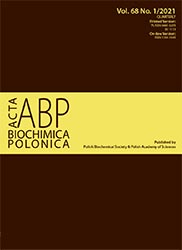Crystal structure of timothy grass allergen Phl p 12.0101 reveals an unusual profilin dimer
Abstract
Timothy grass pollen is a source of potent allergens. Among them, Phl p 1 and Phl p 5 are thought to be the most important, as a majority of timothy grass-allergic individuals have IgE antibodies directed against these two allergens. The profilin from timothy grass (Phl p 12) has been registered as a minor allergen, with up to 35% of individuals in populations of grass pollen allergic patients showing IgE binding to Phl p 12. Profilins are primarily minor allergens and are known for a high likelihood of co-sensitization as well as cross-reactivity situations caused by their sequence and structure similarity. The crystal structure of Phl p 12.0101 was determined and it revealed that this allergen may form an unusual dimer not previously observed among any profilins. For example, the Phl p 12 dimer has a completely different geometry and interface when compared with the latex profilin (Hev b 8) dimer that has its crystal structure determined. The structure of Phl p 12.0101 is described in the context of allergenic sensitization and allergy diagnostics. Moreover, the structure of the Phl p 12.0101 dimer is discussed, taking into account the production of recombinant allergens and their storage.
Acta Biochimica Polonica is an OpenAccess quarterly and publishes four issues a year. All contents are distributed under the Creative Commons Attribution-ShareAlike 4.0 International (CC BY 4.0) license. Everybody may use the content following terms: Attribution — You must give appropriate credit, provide a link to the license, and indicate if changes were made. You may do so in any reasonable manner, but not in any way that suggests the licensor endorses you or your use.
Copyright for all published papers © stays with the authors.
Copyright for the journal: © Polish Biochemical Society.


